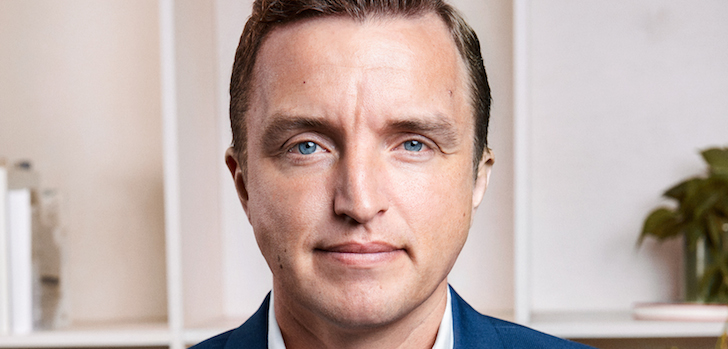Kim Hellström (H&M): “It is very expensive to be less polluting, but the alternative is to run out of customers”
The strategy lead, climate and water for H&M, who has pledged to be climate-positive in 2040, has attended the UN Climate Summit in Madrid to discuss the progress of the Fashion Charter.

Neither planting trees, nor consuming less. Reducing the environmental impact of fashion happens, according to Kim Hellström, by having a holistic view of the value chain and reducing emissions as a whole, not just offsetting them. The executive joined H&M in 2008 and since 2018 he is the strategy lead, climate and water for H&M. His goal? That the Swedish giant is climate positive in 2040. Back to Stockholm after participating in the Climate Summit in Madrid, Hellström talks about what the group is doing to achieve that goal and why Greta Thunberg contributes more to change than governments.
Mds: Who is leading the change, Governments, companies or NGOs?
Kim Hellström: Today I feel that the companies are leading the change. You see some examples of the governments here and there but there is no gathering force of the governments. I see more actions from the corporations so far and I hope that governments will catch up soon.
Mds: What could governments do?
K.H.: They must manage, they haven’t even agreed on the basic rules on offsetting and accounting. It looks that it will be postponed again. They need to start talking. But from a corporate perspective is about having the best time of regulation specially in the markets where we source from.
Mds: Is contamination at source responsibility of the retailer?
K.H.: We have the scope that we are taking responsibility all the way from raw materials. And the biggest part is coming from electricity use in production. Many governments have signed the Paris agreement, but they are not showing that they are doing anything.
“You have to reduce emissions; planting trees doesn’t change anything”
Mds: What does it mean to be climate positive?
K.H.: It means we are going reduce more than what our global value chain emits. We are building the whole strategy about becoming climate positive. We need to align on what does it take.
Mds: But most companies talk about being carbon neutral. Is that greenwashing?
K.H.: I want us and others to focus on reductions. We have this common budget. If we don’t stop that nothing will happen, it doesn’t matter how many trees we plant; all efforts will have to go towards decreasing emissions.
Mds: Is it expensive to be less polluting?
K.H.: It will be very expensive, but the alternative is that we won’t have any customers. How much will it costs us to do nothing? It’s difficult to transition to recycling costs a lot of money but it’s a transition journey, first we need to reduce virgin cotton and in the long run find materials. There’s nothing that can be done tomorrow. The important thing is while the journey is you connect your plane to science.
“About 20% of the emissions are produced at customers’ homes; changing your habits is the most difficult”
Mds: Is this wave of sustainability a matter of responsibility, survival or marketing?
K.H.: I truly think that the awareness is increasing in the general public. We need to thank Greta Thunberg and others like here because it really has opened the eyes in the general public. For some reason people listen to her.
Mds: What part of the value chain has the greatest impact on the environment?
K.H.: Fabric production represents at least 75% of CO2 emissions.
Mds: What is the most difficult to address?
K.H.: The customer behavior. Because today 20% of our emissions come from when customers are using their clothes. It’s very difficult to measure. If you do something to raise awareness, that will be of course difficult to measure.
Mds: You’re testing re-use, re-selling, rental… The ideal future will be to stop buying new clothes?
K.H.: We need to decrease the use of virgin material. In a perfect world we will reuse the same material for an infinite amount of time. It’s not the pace of the fashion the problem, it is the production process.


info@themds.com
Validation policy for comments:
MDS does not perform prior verification for the publication of comments. However, to prevent anonymous comments from affecting the rights of third parties without the ability to reply, all comments require a valid email address, which won’t be visible or shared.
Enter your name and email address to be able to comment on this news: once you click on the link you will find within your verification email, your comment will be published.